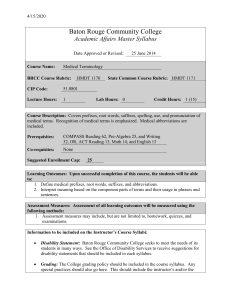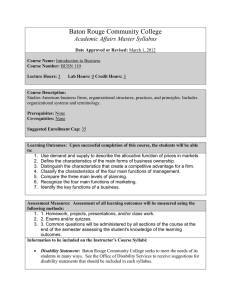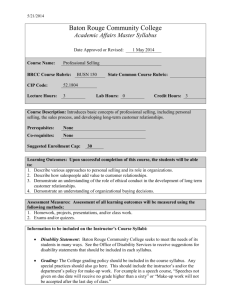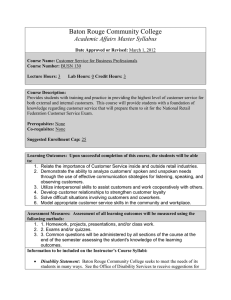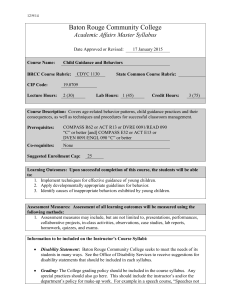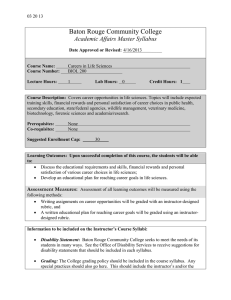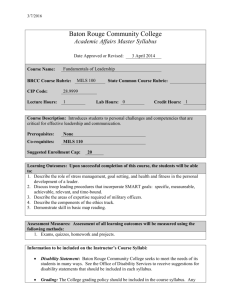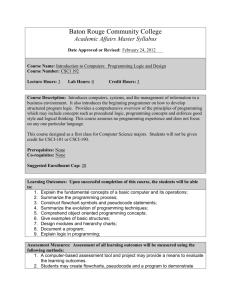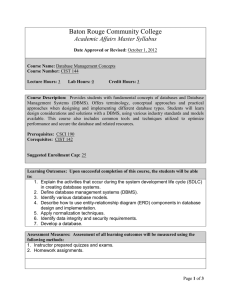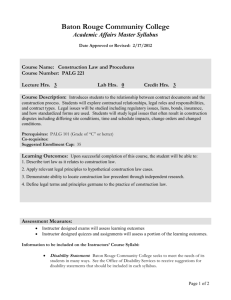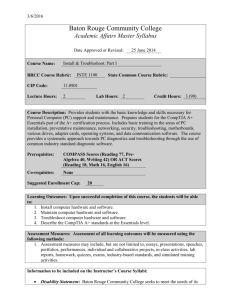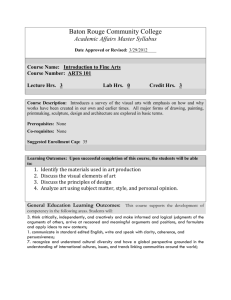HNUR_1300_MS - Baton Rouge Community College
advertisement
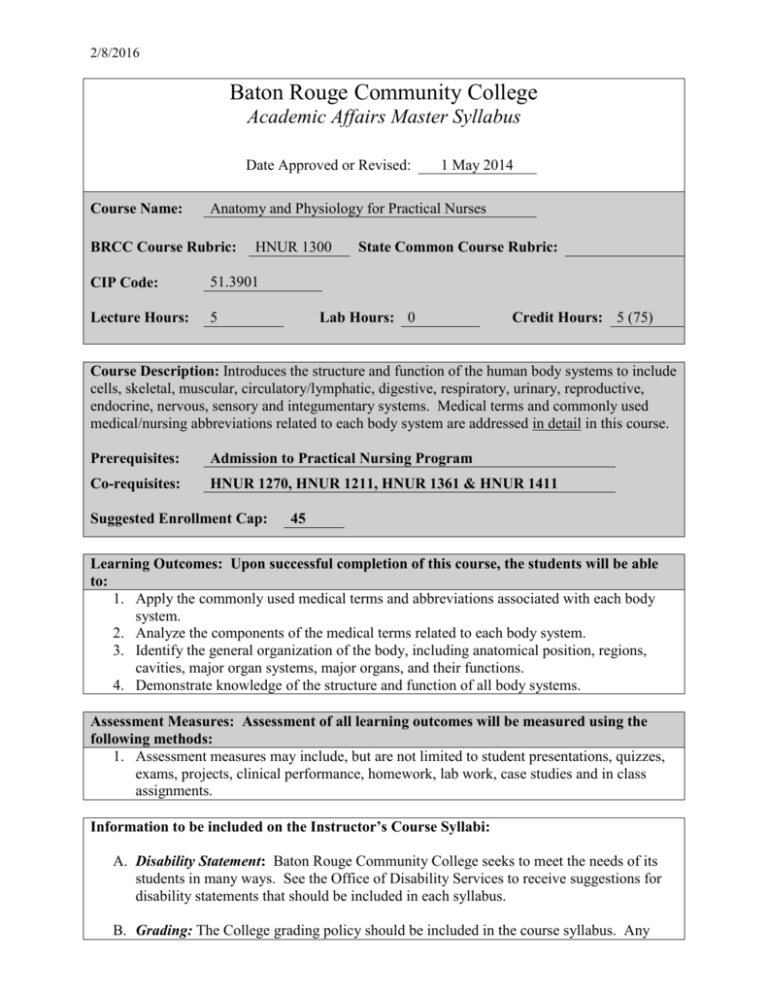
2/8/2016 Baton Rouge Community College Academic Affairs Master Syllabus Date Approved or Revised: Course Name: 1 May 2014 Anatomy and Physiology for Practical Nurses BRCC Course Rubric: HNUR 1300 CIP Code: 51.3901 Lecture Hours: 5 State Common Course Rubric: Lab Hours: 0 Credit Hours: 5 (75) Course Description: Introduces the structure and function of the human body systems to include cells, skeletal, muscular, circulatory/lymphatic, digestive, respiratory, urinary, reproductive, endocrine, nervous, sensory and integumentary systems. Medical terms and commonly used medical/nursing abbreviations related to each body system are addressed in detail in this course. Prerequisites: Admission to Practical Nursing Program Co-requisites: HNUR 1270, HNUR 1211, HNUR 1361 & HNUR 1411 Suggested Enrollment Cap: 45 Learning Outcomes: Upon successful completion of this course, the students will be able to: 1. Apply the commonly used medical terms and abbreviations associated with each body system. 2. Analyze the components of the medical terms related to each body system. 3. Identify the general organization of the body, including anatomical position, regions, cavities, major organ systems, major organs, and their functions. 4. Demonstrate knowledge of the structure and function of all body systems. Assessment Measures: Assessment of all learning outcomes will be measured using the following methods: 1. Assessment measures may include, but are not limited to student presentations, quizzes, exams, projects, clinical performance, homework, lab work, case studies and in class assignments. Information to be included on the Instructor’s Course Syllabi: A. Disability Statement: Baton Rouge Community College seeks to meet the needs of its students in many ways. See the Office of Disability Services to receive suggestions for disability statements that should be included in each syllabus. B. Grading: The College grading policy should be included in the course syllabus. Any special practices should also go here. This should include the instructor’s and/or the department’s policy for make-up work. For example in a speech course, “Speeches not given on due date will receive no grade higher than a sixty” or “Make-up work will not be accepted after the last day of class.” C. Attendance Policy: Include the overall attendance policy of the college. Instructors may want to add additional information in individual syllabi to meet the needs of their courses. D. General Policies: Instructors’ policy on the use of things such as beepers and cell phones and/or hand held programmable calculators should be covered in this section. E. Cheating and Plagiarism: This must be included in all syllabi and should include the penalties for incidents in a given class. Students should have a clear idea of what constitutes cheating in a given course. F. Safety Concerns: In some programs this may be a major issue. For example, “No student will be allowed in the safety lab without safety glasses.” General statements such as, “Items that may be harmful to one’s self or others should not be brought to class.” G. Library/ Learning Resources: Since the development of the total person is part of our mission, assignments in the library and/or the Learning Resources Center should be included to assist students in enhancing skills and in using resources. Students should be encouraged to use the library for reading enjoyment as part of lifelong learning. Expanded Course Outline: I. II. III. IV. Medical terms and abbreviations associated with each body system Components of the medical terms related to each body system Organization of the body, including anatomical position, regions, cavities, major organ systems, major organs, and their functions Structure and function of: A. Cells, membranes, and tissues B. Muscular system C. Skeletal system: bones of the axial and appendicular skeletons; articulations D. Circulatory/lymphatic/ immune systems E. Digestive system F. Respiratory system G. Urinary system H. Reproductive system I. Endocrine system J. Nervous system K. Sensory system L. Integumentary system 2
